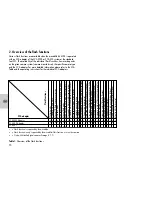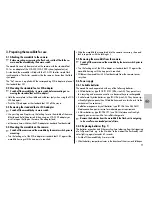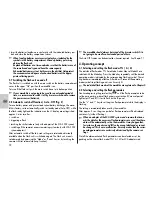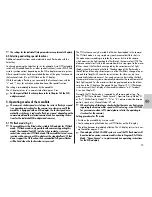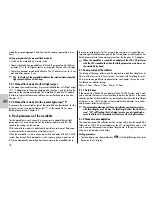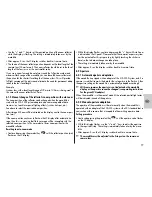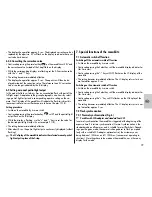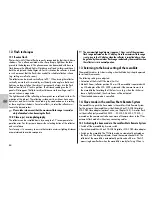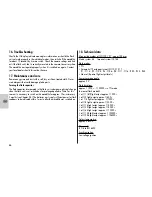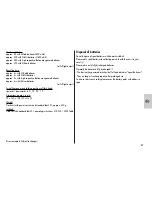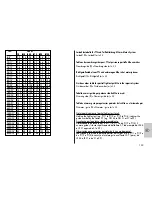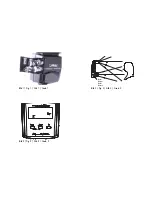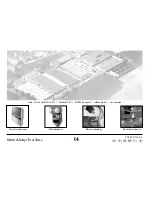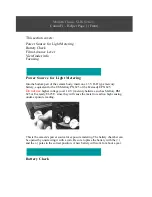
84
ķ
12. Flash techniques
12.1 Bounce flash
Photos shot with full frontal flash are easily recognized by their harsh, dense
shadows. This is often associated with a sharp drop in light from the fore-
ground to the background. This phenomenon can be avoided with bounce
flash because the diffused light will produce a soft and uniform rendition of
both the subject and the background. For this situation the reflector is turned
in such a manner that the flash is bounced off a suitable reflection surface
(e.g. ceiling or walls of a room).
The reflector can be turned vertically up to 90°. When turning the reflector
vertically, ensure that it is moved by a sufficiently wide angle so that direct
light can no longer fall on the subject. Consequently, always turn the flash
head at least to its 60° lock-in position. The distance readings on the LC
panel will disappear. The flash-to-subject distance via the ceiling or wall is
now an unknown magnitude.
The light bounced off the reflecting surfaces produces a soft and uniform illu-
mination of the subject. The reflecting surface must be white or have a neu-
tral colour, and it must not be structured e.g. by wooden beams in a ceiling,
as these might cast shadows. For colour effects just select the reflective sur-
face in the desired colour.
Please take into account that the maximum flash range is consider-
ably diminished when bouncing the flash.
12.2 Close-ups / macrophotography
The reflector can be swivelled down by an angle of -7° to compensate for
parallax error. For this purpose depress the unlocking button of the reflector
and swivel down.
For close-ups it is necessary to ensure that certain minimum lighting distances
are maintained to avoid overexposure.
☞
The minimum lighting distance is approx. 10 per cent of the maximum
flash range indicated on the LC display. Since the maximum flash range
is not given in the LC display when the reflector is swivelled down, then
be guided by the maximum flash range indicated by the mecablitz when
the reflector is in its normal position.
13. Returning to the basic setting of the mecablitz
The mecablitz returns to its basic setting when the Mode key is kept depressed
for at least three seconds.
The following settings are adjusted:
• Activation of the Auto-Off function (3m On).
• Mode M.Zoom; reflector position 28 mm. If the mecablitz is operated with
an SCA adapter of the SCA 3002 system and if the camera transmits to
the mecablitz the focal length of the lens in use (e.g. when the shutter re-
lease is lightly touched), then Auto Zoom will be activated.
• The extended zoom mode is cancelled.
14. Slave mode in the cordless Metz Remote System
The mecablitz supports the slave mode in the cordless Metz Remote System.
For this purpose, the mecablitz must be fitted with an SCA 3083 digital or
SCA 3082 slave adapter (optional extra, see Chapter 14.2). A master flash
unit (controller) (only mecablitz 40 MZ-..., 50 MZ-5, 54 MZ-3, 70 MZ-...)
mounted on the camera controls one or more off-camera slaves in the TTL or
automatic flash mode A without any connecting cables.
14.1 Activating the slave mode in the cordless Metz Remote System
• Switch off the mecablitz by its main switch.
• Equip the mecablitz with an SCA 3083 digital or SCA 3082 slave adapter.
• Switch on the mecablitz. The TTL flash mode is automatically activated on
the flash unit. The display indicates SL and the remote channel Ad1. The
reflector of the mecablitz is automatically positioned on 28 mm. The AF
measuring beam flashes when the mecablitz is ready for firing. When in
☞

